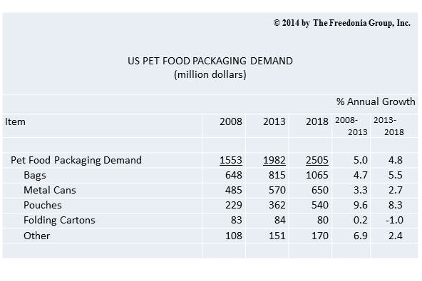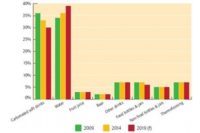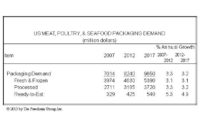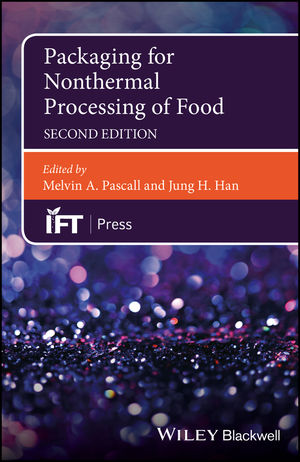US Demand for pet food packaging to reach $2.5 billion

US demand for pet food packaging is expected to rise 4.8% annually to $2.5 billion in 2018. Growth will be based on the use of higher-value, more-sophisticated packaging and continued strength in pet food shipments fueled by an expected rebound in the pet population. The proliferation of premium pet food brands providing healthier, more nutritious alternatives (corresponding to the continuing humanization of pets by their owners) also will spur packaging demand growth. These and other trends are presented in Pet Food Packaging, a new study from The Freedonia Group, Inc. (freedoniagroup.com), a Cleveland-based market research firm.
According to analyst Joe Pryweller, “Plastic pouches will be the primary beneficiary of the trend toward more advanced pet food packaging. Pouch demand in pet food packaging will rise 8.3% per year to $540 million in 2018, the fastest pace of growth among pet food packaging types.” Pouch demand will be bolstered by features that are inherently convenient for consumers, including zippered closure mechanisms and light weight, as well as by reduced transportation costs due to their light weight.
Demand for tubs and cups will benefit from the need for convenience features and light weight in pet food packaging. As a result, tubs and cups will continue to supplant metal containers in wet food, growing in popularity due to peelable lids that are easier to open and allow the consumer to avoid cuts from metal edges.
Dry food will continue to represent the largest food segment in pet food packaging, with a share of 49% in 2018. Bags are by far the largest packaging type in this segment due to the dominance of bulk items -- those weighing 16 pounds or more -- in dry pet food. Multiwall paper bags are the preferred packaging type in the dry food packaging category, but woven polypropylene bags are gaining favor, with demand expected to expand 8.6% annually through 2018. Chilled and frozen pet food products offer another area of opportunity for pet food packaging growth. This category has developed from a small base and is expected to more than double in size through 2018, boosting demand for pouches, bags, tubs and cups, and chubs. Consumer interest in raw pet food products with prolonged shelf life will fuel growth in this category as retail stores increase freezer and refrigerator shelf space.
Looking for a reprint of this article?
From high-res PDFs to custom plaques, order your copy today!







